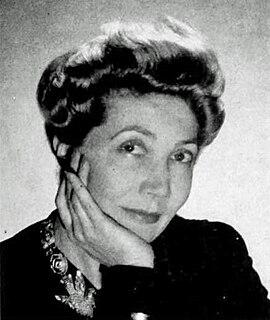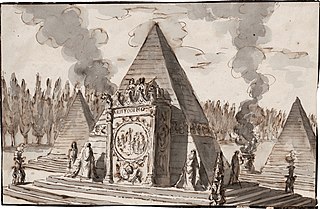Related Research Articles

Andrea Andreani (1540–1623) was an Italian engraver on wood, who was among the first printmakers in Italy to use chiaroscuro, which required multiple colours.

Cooper Hewitt, Smithsonian Design Museum is a design museum located in the Upper East Side's Museum Mile in Manhattan, New York City. It is one of 19 museums that fall under the wing of the Smithsonian Institution and is one of three Smithsonian facilities located in New York City, the other two being National Museum of the American Indian's George Gustav Heye Center in Bowling Green and the Archives of American Art New York Research Center in the Flatiron District. It is the only museum in the United States devoted to historical and contemporary design. Its collections and exhibitions explore approximately 240 years of design aesthetic and creativity.

Juste-Aurèle Meissonier was a French goldsmith, sculptor, painter, architect, and furniture designer.

William Trost Richards was an American landscape artist. He was associated with both the Hudson River School and the American Pre-Raphaelite movement.

The Musée des Arts décoratifs is a museum dedicated to the exhibition and preservation of the decorative arts. Located at 107 Rue de Rivoli in the city's 1st arrondissement, the museum occupies the most north-western wing of the Palais du Louvre, known as the Pavillon de Marsan. With over one million objects in its collection, the Musée des Arts décoratifs is the largest museum of decorative arts in continental Europe.
The Campana Brothers are Brazilian designers.

Gaetano Gandolfi was an Italian painter of the late Baroque and early Neoclassic period, active in Bologna.
Olson Kundig, an American architectural firm based in Seattle, was founded by architect Jim Olson in 1967. Current principal/owners include Jim Olson, FAIA, Tom Kundig, FAIA, FAIA, Kirsten R. Murray, AIA, Alan Maskin and Kevin M. Kudo-King. Olson Kundig’s work encompasses museums, commercial and mixed-use design, exhibit design, interior design, places of worship, and residences, often for art collectors. The firm was awarded the 2009 AIA Architecture Firm Award from the American Institute of Architects. The firm launched an interiors studio in 2000. Their first line of accessories, The Tom Kundig Collection, debuted in 2012.

Vera Huppe Maxwell was a pioneering sportswear and fashion designer.

Stephen Arnold Douglas Volk was an American portrait and figure painter, muralist, and educator. He taught at the Cooper Union, the Art Students League of New York, and was one of the founders of the Minneapolis School of Fine Arts. He and his wife Marion established a summer artist colony in western Maine.

Dorothy Wright Liebes was an American textile designer and weaver renowned for her innovative, custom-designed modern fabrics for architects and interior designers. She was known as "the mother of modern weaving".

Franz Alt (1821–1914) was an Austrian landscape painter, son of Jakob Alt and the younger brother of Rudolf von Alt. His work is included in the collection of the Metropolitan Museum of Art, the Cooper Hewitt Museum (Smithsonian), the Albertina Museum, the Museum of Fine Arts, Budapest and other international collections.

Giuseppe Barberi (1746-1809) was an Italian architect, though he first trained as a silversmith.

Felice "Lizzie" Rix-Ueno (1893–1967) was an Austrian textile, wallpaper, and craft designer. She lived in Japan, and became an influential figure in the Japanese modern art scene.

Pierre-Edmé Babel was a French engraver. Babel designed pieces for the Palace of Versailles, today they are seen in the Hall of Mirrors at the Palace. Works by Babel are held in the collection of the Cooper-Hewitt, National Design Museum, Metropolitan Museum of Art, Victoria and Albert Museum and the Harvard Art Museums.
Elenhank was a textile design firm. It was started by artist Eleanor Kluck and her husband architect Henry Kluck. They blended their names together to create the company name. They started creating textiles in 1946. Eleanor Kluck designed and cut the lino-cuts that were used. She started working with Henry Kluck in 1948. In the mid-1950s they started to use screen-printing methods. In the 1970s they started designing textiles influenced by Northern Indiana landscapes.
Marianne Strengell was an influential Finnish-American Modernist textile designer in the twentieth century. Strengell was a professor at Cranbrook Academy of Art from 1937 to 1942, and served as department head from 1942 to 1962. She was able to translate hand-woven patterns for mechanized production, and pioneered the use of synthetic fibers.
Utagawa Kuniyasu was a Japanese artist best known for his prints in the ukiyo-e style as a member of the Utagawa school.

Elsa Rady was an American ceramist.
Julian Clarence Levi was an American architect, watercolor painter, and philanthropist.